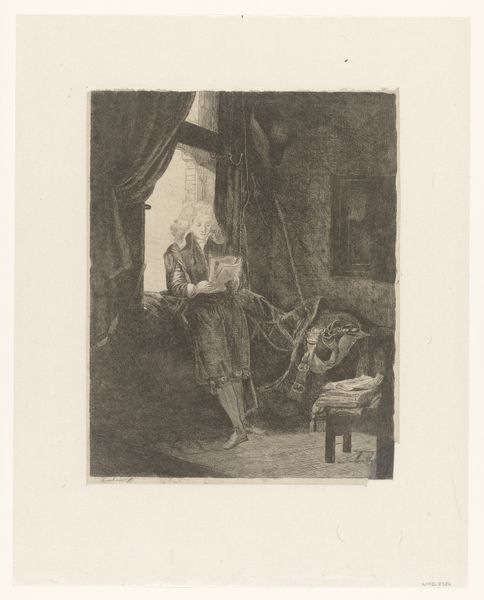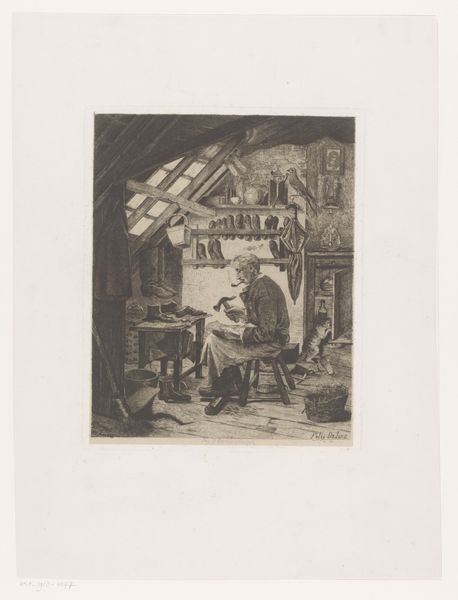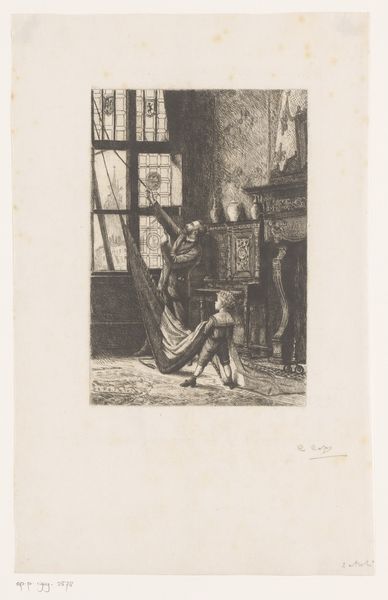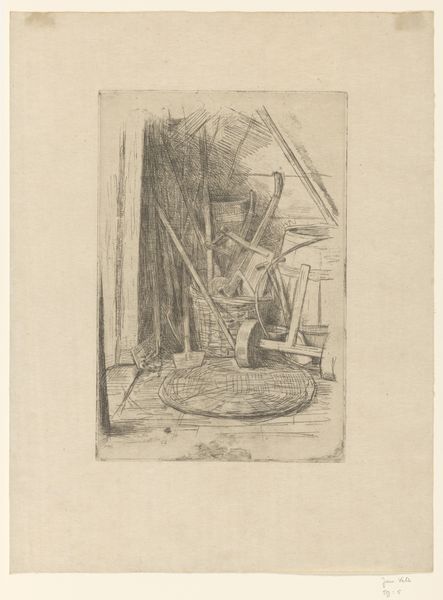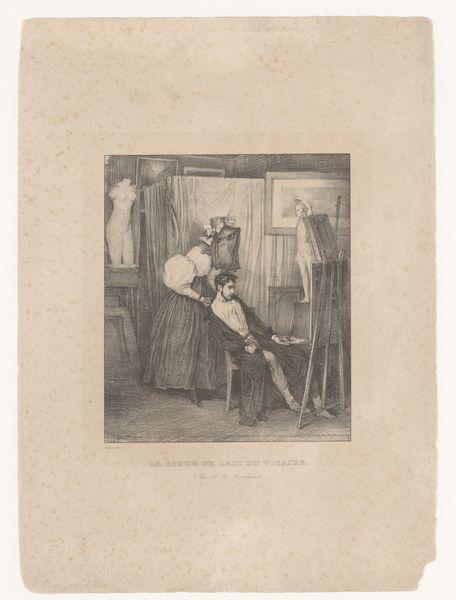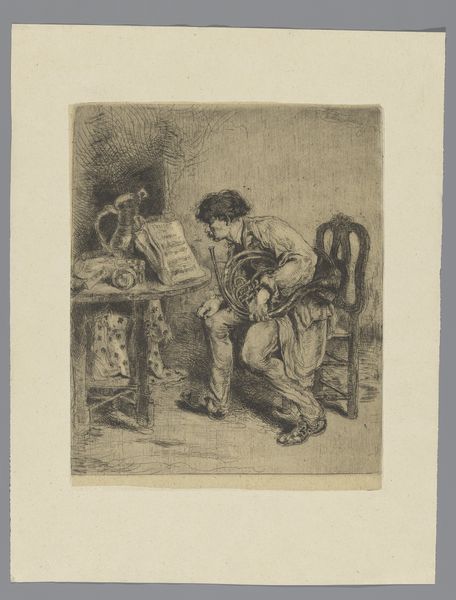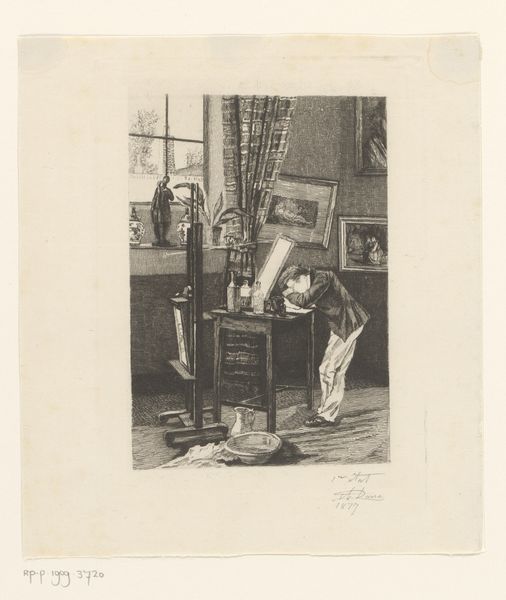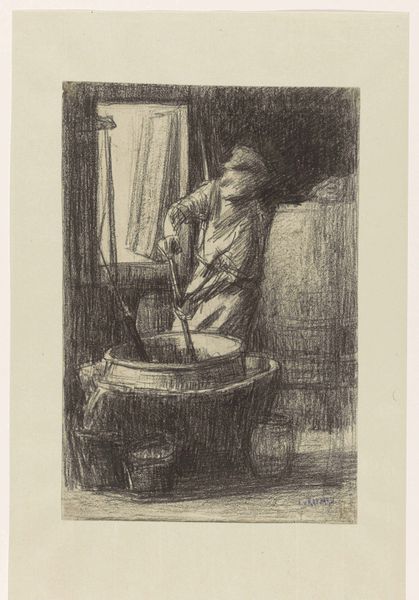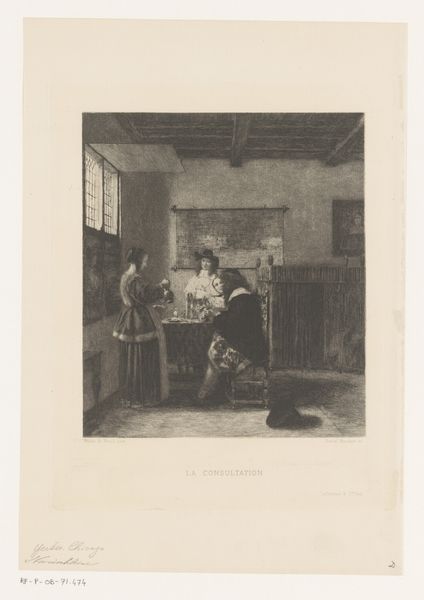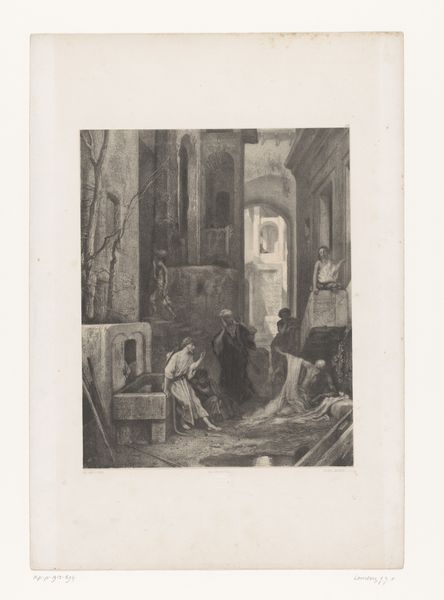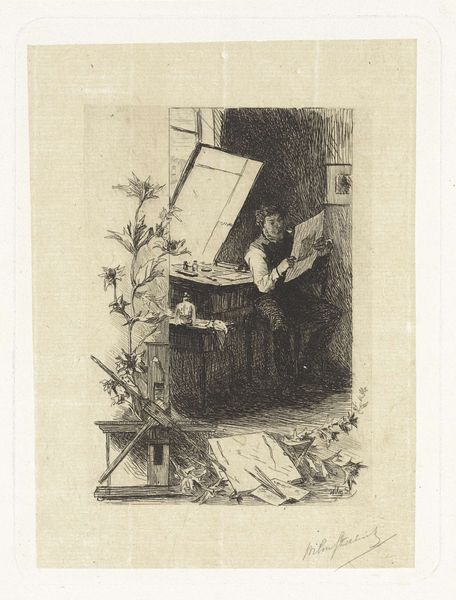
Dimensions: height 390 mm, width 313 mm
Copyright: Rijks Museum: Open Domain
Curator: This is Auguste Danse’s “Portret van Frans Meerts aan zijn ezel,” or “Portrait of Frans Meerts at his Easel,” an etching created in 1881. It’s a captivating, intimate glimpse into the artist’s world, preserved here at the Rijksmuseum. Editor: Yes, there is a certain intimacy here. I immediately sense a quiet diligence in this portrait, and something very human about the space he occupies. The artist is totally immersed. Curator: Precisely! And Danse gives us some clues about Meerts. Consider the carefully rendered details of his studio – the stacked canvases, the modest light – all hinting at a dedicated, perhaps even struggling, artist. The realistic style emphasizes his commitment to portraying everyday life. Editor: That’s right, the accoutrements feel deliberately chosen. Beyond being just a depiction of an artist at work, doesn’t this capture something more symbolic about the artist’s role in society? The somewhat drab setting gives way to the suggestion of art as labour. The palette in the artist's hand acts almost as a kind of orb in depictions of kings. The power to create, to transform. Curator: Indeed, the artist's tools are transformed into something elevated, almost ceremonial. Beyond symbolism, the artwork reflects broader social shifts of the era. With the rise of Realism in the late 19th century, there was an increasing focus on portraying working-class figures and the realities of daily life. Here, Frans Meerts at his easel embodies that sentiment. Editor: And while Realism certainly played a role, this etching also recalls the powerful image of Saint Luke painting the Virgin, an important touchstone in the visual canon when we think about depictions of artists at work. This etching manages to recall tradition whilst simultaneously participating in new modern modes of picturing. Curator: An interesting comparison. The artist in his workspace became something of a motif. But I feel Danse really sought to celebrate artistic practice, perhaps idealizing his subject and artistic labor in general. The late 19th century, with all its social upheavals and emergent artist subcultures, surely helped promote and romanticize the artistic lifestyle. Editor: Perhaps, yes. But this feels much more like careful and detailed work, less idealized. Perhaps this etching really captures both Meerts's practice, and his psychological investment, leaving us with lingering reflections on artistic identity. Curator: A striking summation! I appreciate how exploring the historical context informs our perception and how looking at iconography opens new insights. Editor: Likewise, exploring its placement in history offers us vital cultural and social cues about visual symbolism in times of great transition.
Comments
No comments
Be the first to comment and join the conversation on the ultimate creative platform.
